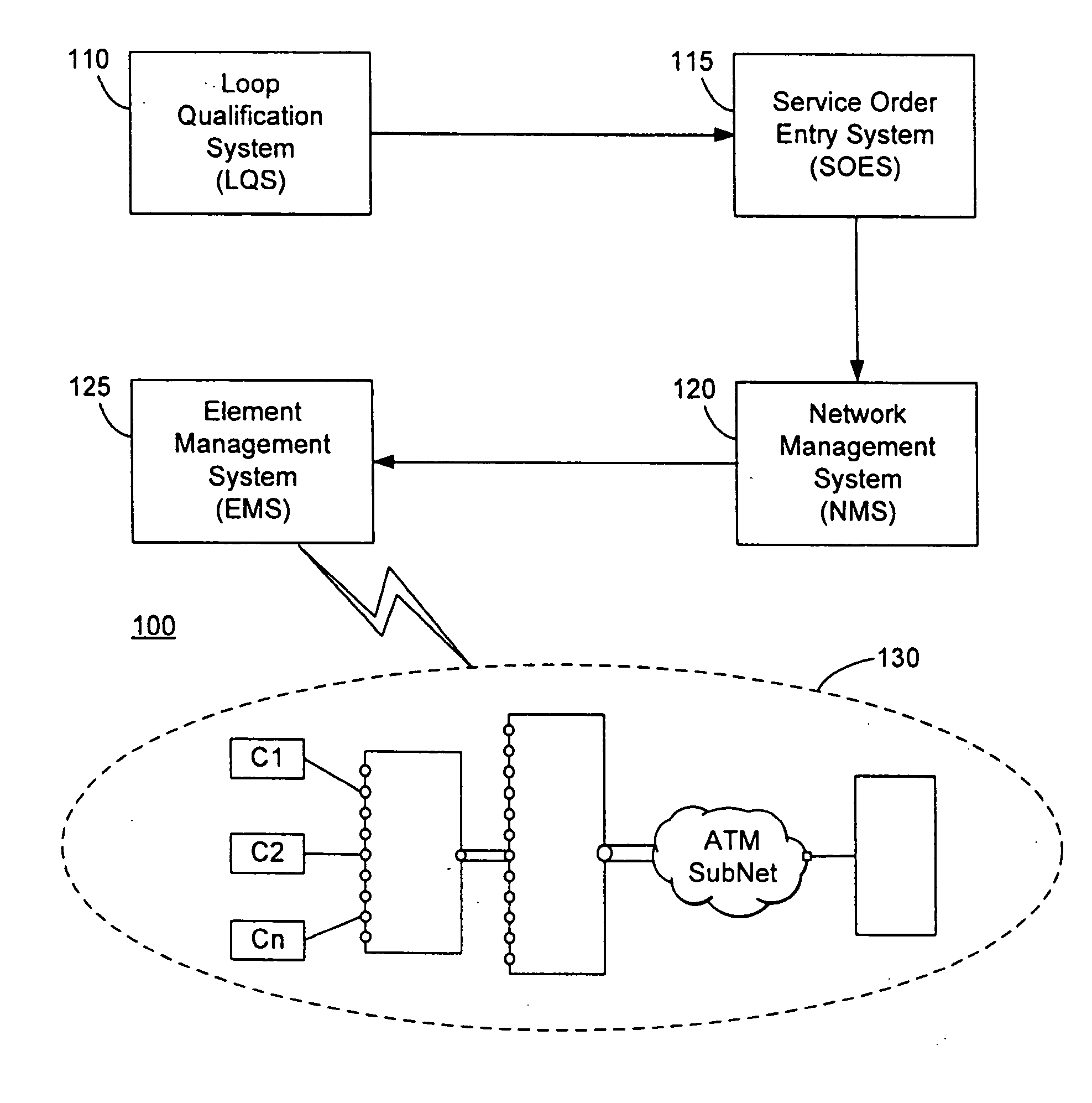Asynchronous digital subscriber line (ADSL) resource planning
a technology of asynchronous digital subscriber lines and resource planning, applied in the direction of digital transmission, data switching networks, electrical devices, etc., can solve the problems of difficult arbitrarily determining any vci value or any vpi value once assigned, and it is almost impossible to imagine not interfacing with some form of computing device in a given day, so as to achieve the effect of optimizing adsl network resources and being easy to calcula
- Summary
- Abstract
- Description
- Claims
- Application Information
AI Technical Summary
Benefits of technology
Problems solved by technology
Method used
Image
Examples
Embodiment Construction
Overview
[0018]Asynchronous Digital Subscriber Line (ADSL) converts existing twisted-pair telephone lines into access paths for multimedia and high-speed data communications. With ADSL, the throughput of data varies depending on whether the subscriber is receiving or transmitting data from or to a cooperating network service provider (NSP). That is, in conventional ADSL systems, the subscriber can receive up to six megabits per second, and as much as 832 kilobits per second or more in both directions. Such rates expand existing access capacity by a factor of 50 or more without requiring new cabling. ADSL expands existing public information networks from one limited to voice, text and low resolution graphics to a powerful, ubiquitous system capable of supporting various forms of multimedia (for example, streaming audio and video).
[0019]Generally, an ADSL circuit connects an ADSL modem on each end of a twisted-telephone line, creating three information channels—a high speed downstream ...
PUM
 Login to View More
Login to View More Abstract
Description
Claims
Application Information
 Login to View More
Login to View More - R&D
- Intellectual Property
- Life Sciences
- Materials
- Tech Scout
- Unparalleled Data Quality
- Higher Quality Content
- 60% Fewer Hallucinations
Browse by: Latest US Patents, China's latest patents, Technical Efficacy Thesaurus, Application Domain, Technology Topic, Popular Technical Reports.
© 2025 PatSnap. All rights reserved.Legal|Privacy policy|Modern Slavery Act Transparency Statement|Sitemap|About US| Contact US: help@patsnap.com



